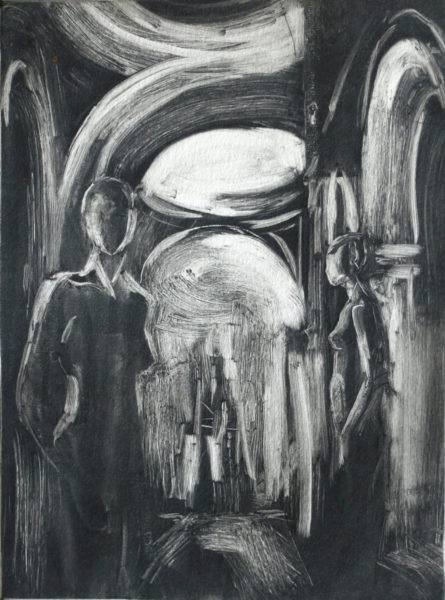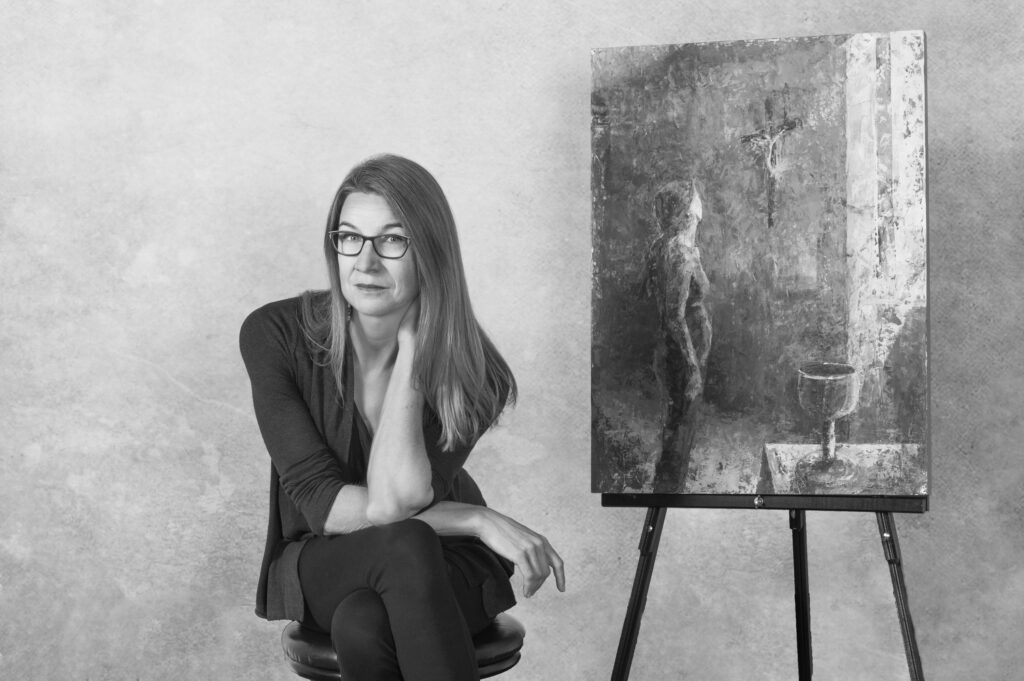
Interrogatio: Inquiry, Monoprint on Paper 2012 ©Michelle Arnold Paine
Advent with Mary will be on exhibit at the International Marian Research Institute at University of Dayton, Ohio from November 27 – January 5, 2017. It is the first time this series of monoprints will be exhibited as a series. I created the series as a continuation of my work on the medieval hymn “Mary the Dawn”. Several of the monoprint images are variations of previously created paintings, but several of the prints address lines in the hymn which I had not yet previously responded to visually. In addition, some of the prints take a different angle on Mary.
In my studies of Art History and my travels and time living in Italy, I was struck by the great number of Annunciations I saw in churches and as altarpieces. This confused me at first – only Mary above the altar? Where was Jesus? But this is the moment of The Incarnation, the moment in which God comes to earth, just as he does in the Eucharist which occurs daily on the altar before it. This narrative episode is not only appropriate but a living metaphor for what occurs there.
The more I reflected on the Annunciation and studied Medieval and Renaissance images of the narrative, the more intrigued I was by Mary’s response. Preachers and painters in Medieval/Renaissance Europe worked in tandem to educated the faithful in the narratives of the Bible. In research* I found that preachers in the early Renaissance analyzed the emotional responses of these narratives quite closely into outlines of virtuous and pious behavior. One preacher in Florence under the famous Cosimo de’ Medici outlined five different emotional/spiritual postures after the angel’s greeting to her:
Conturbatio: Disquiet
Cogitatio: Reflection
Interrogatio: Inquiry
Humilitatio: Submission
Meritatio: Merit
These five “Laudable Conditions of the Blessed Virgin” provide me something to latch on to as I seek to grow in my faith and prayer life. They also provide me with permission to experience the broad range of human emotion and experience as I seek to become intimate with God as Mary did. It is too easy to jump to Mary’s “yes” and in the process lose connection, but she (like me) was disrupted, then needed to reflect, then ask questions, before submitting to God’s will.
*from Michael Baxandall’s Painting and Experience in Fifteenth-Century Italy, pp. 48-55.
Read more about my series of paintings about the Virgin Mary:


